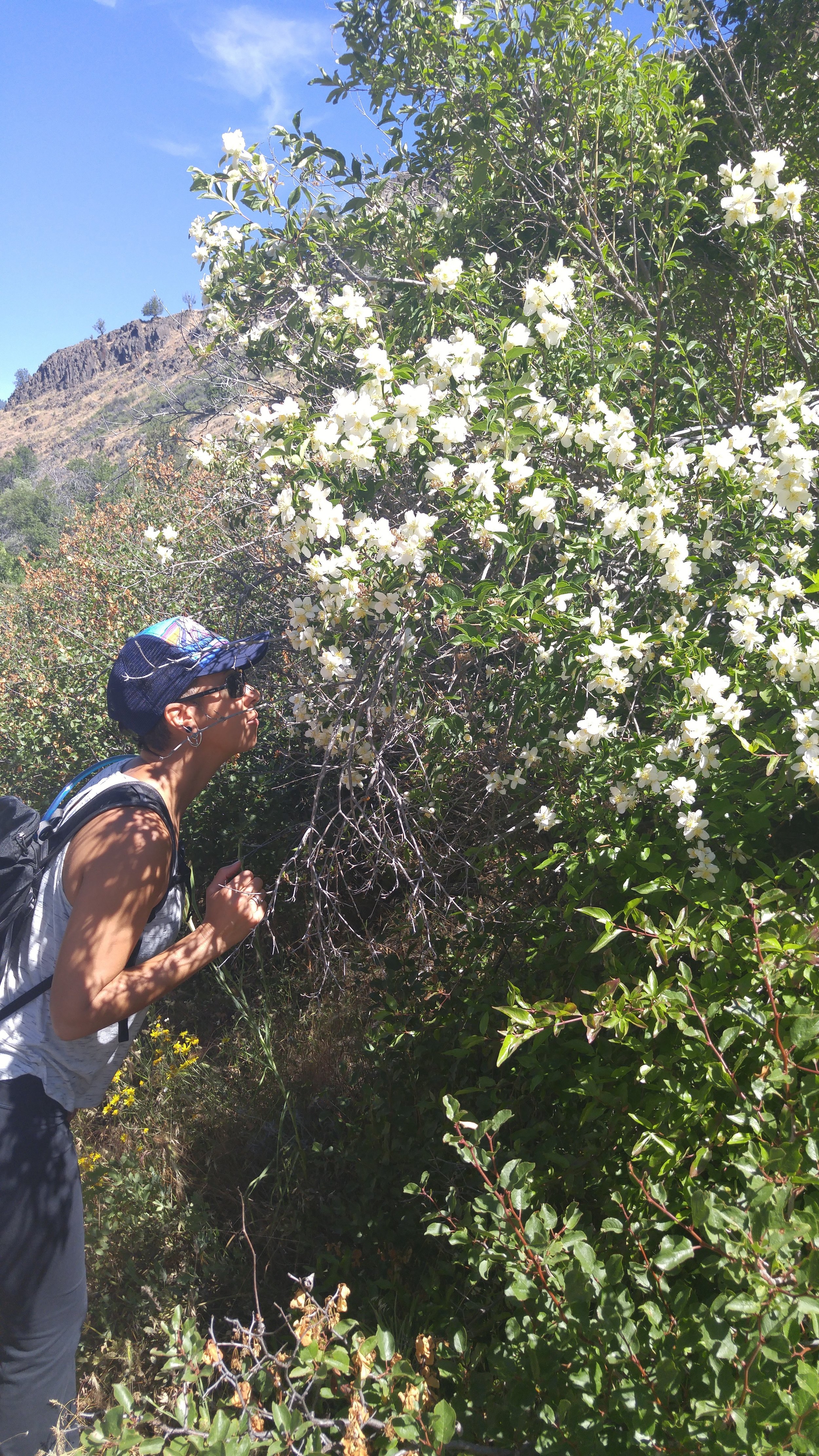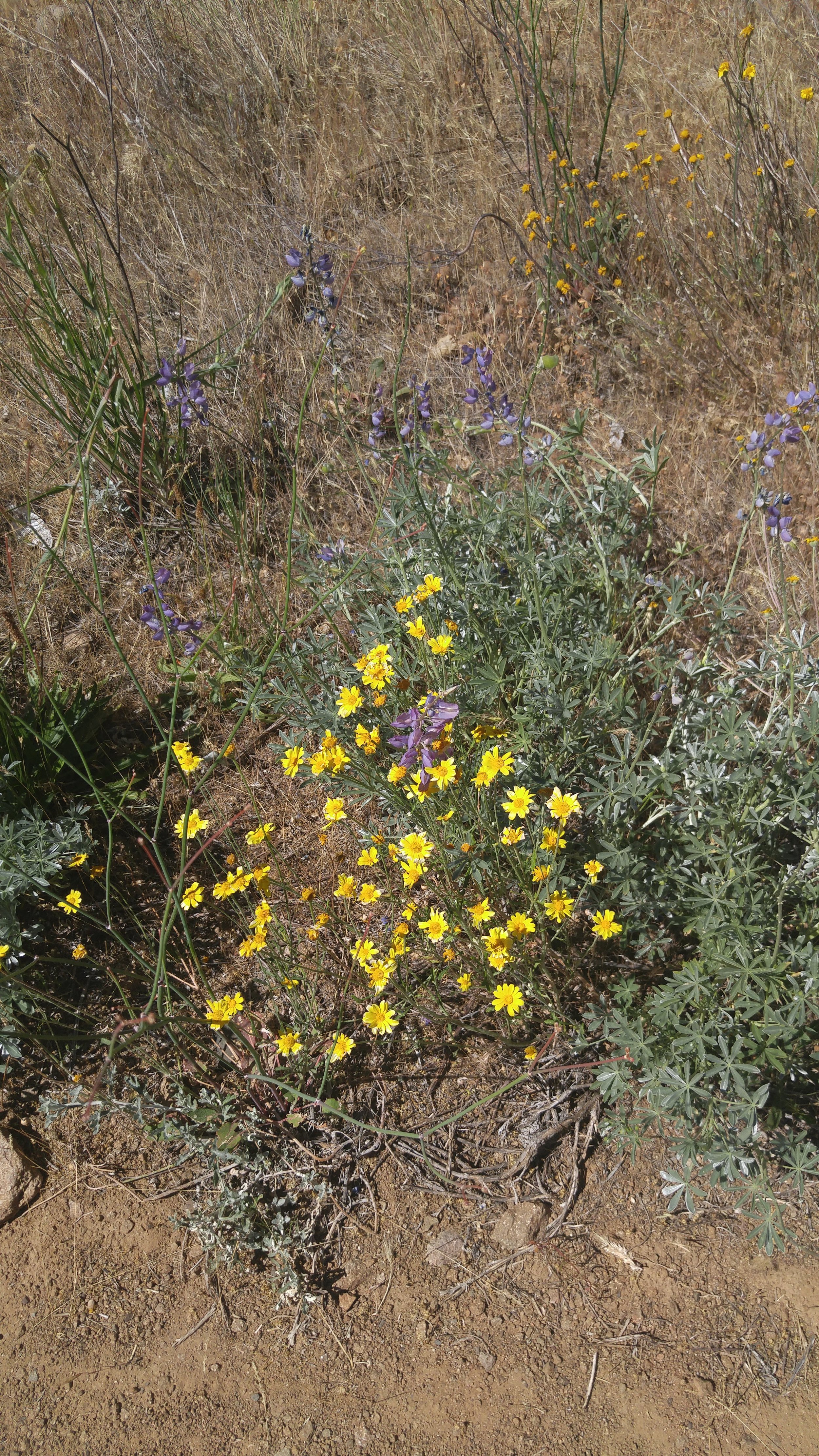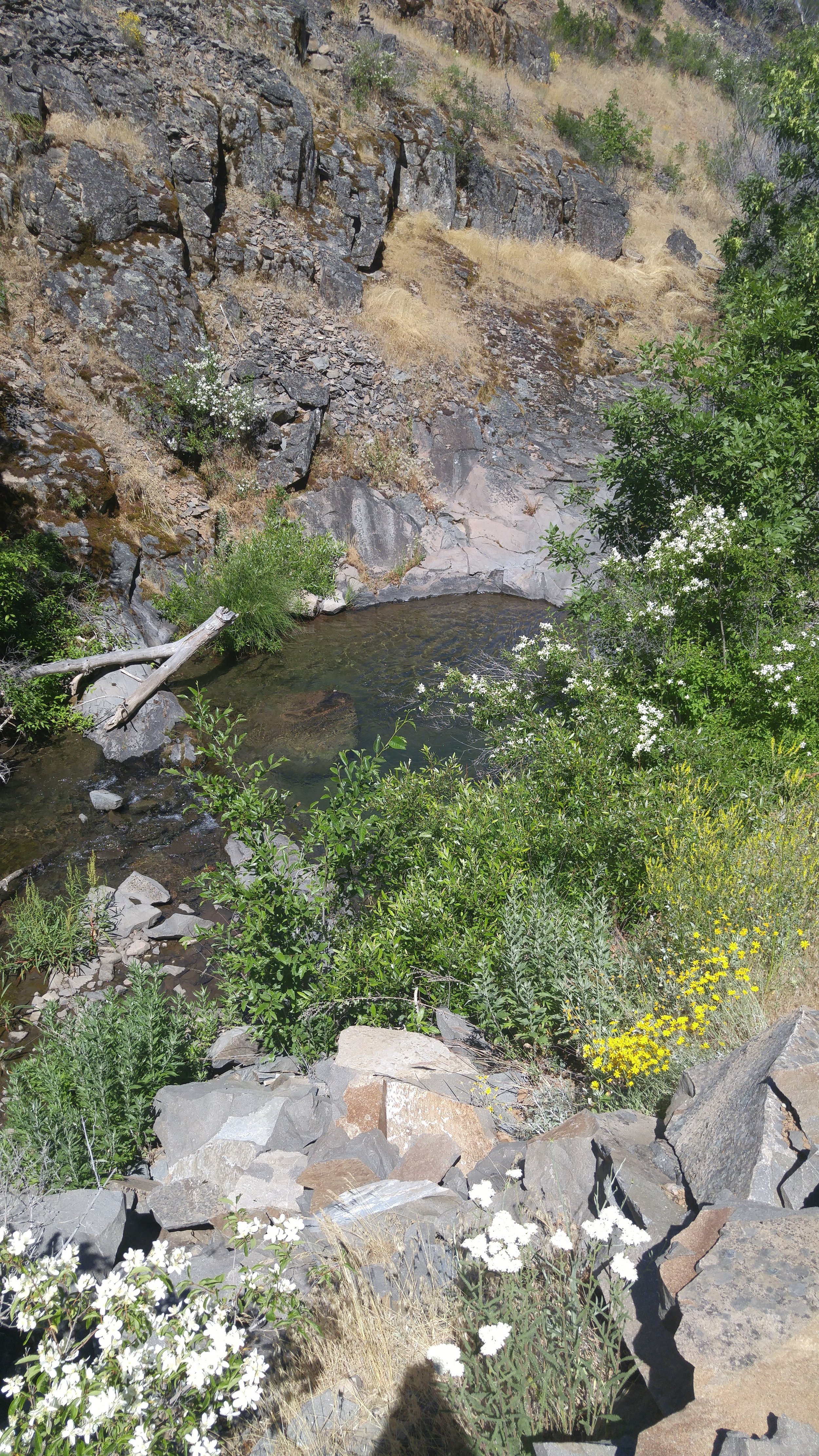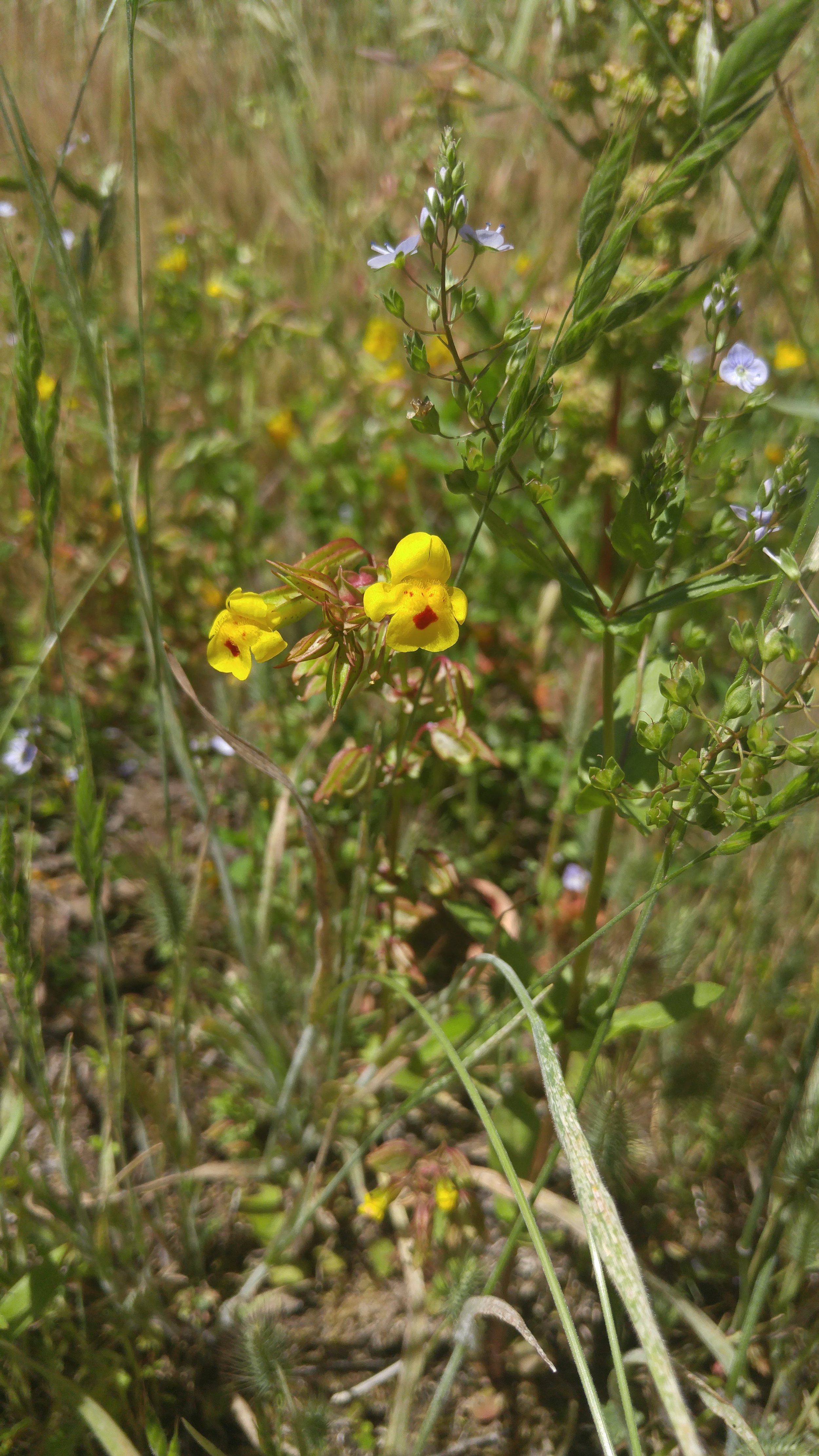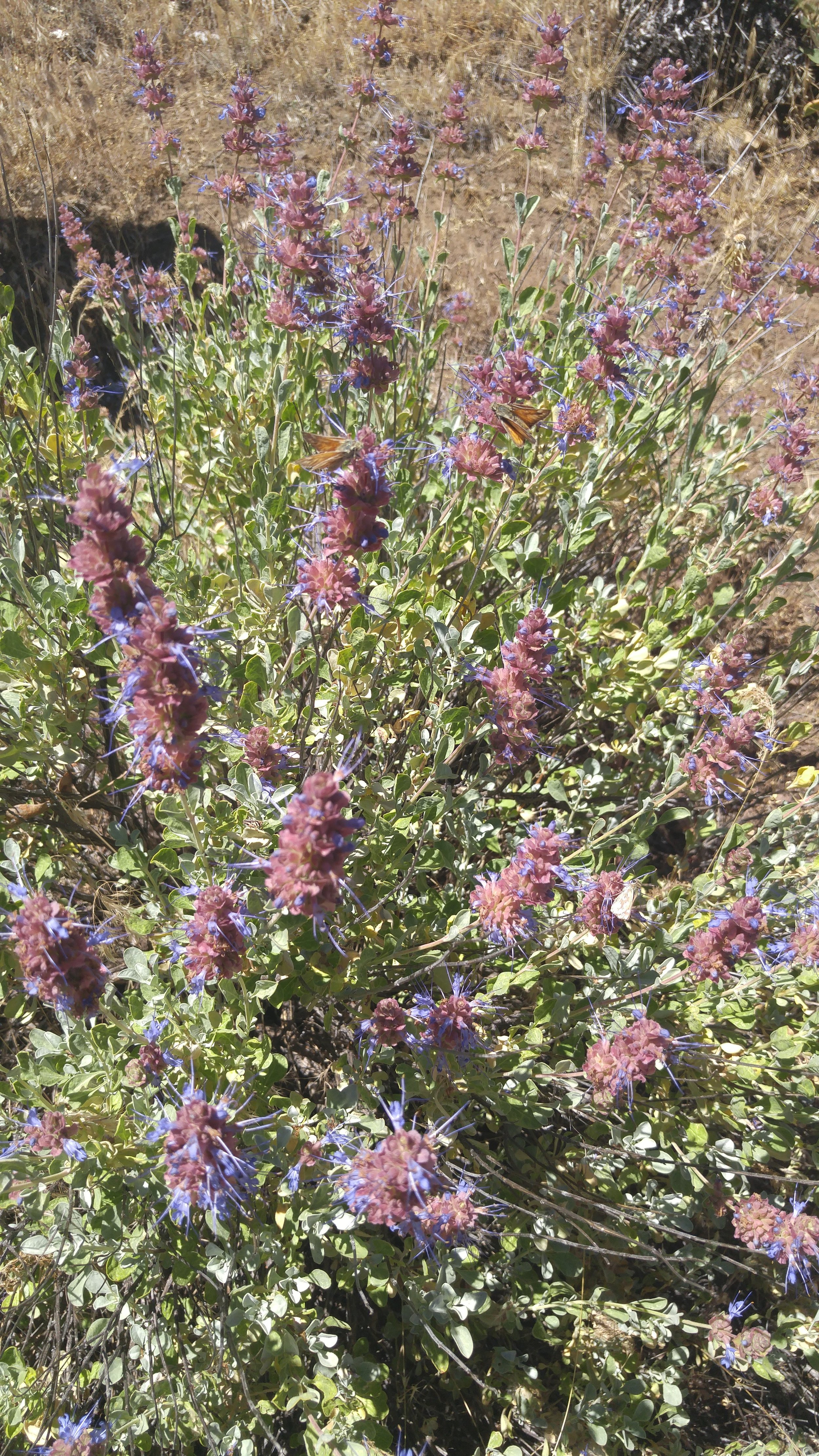We gathered round as she examined the plant protruding from the rocky substrate. Botanist Sheri Hagwood, of the United States Fish and Wildlife Service, had been guiding our group of 15 aspiring naturalists through the Horseshoe Ranch Wilderness Management Area, but had now stopped as something special caught her eye. There was a small plant with green ovate leaves and a pinkish-red stem; its sepals closed tightly around its hidden flower bloom, which would open in the afternoon, giving this plant its name. We had found a rare Four o’clock flower, Mirabilis greenei, of the family Nyctaginaceae.
Our adventure started in the Casa Ramos parking lot in Yreka, CA. We were meeting for our first ever Hike & Learn event focused on the monument expansion into Northern California. We had a great group with many of our Ashland regulars making the trip to join some new faces from the Yreka area. As soon as we all got together and organized our carpool, we struck out for the trailhead.
Our drive took us around Iron Gate Reservoir, to the mouth of Scotch Creek. It was to be a warm day, and the cool blue pools of the creek were already very enticing. As we made our way along, we took time to stop periodically and identify different species like white and black oak, milkweed, desert paintbrush, mock orange, and many others. Our hike along Scotch Creek was accompanied by a melody of birds including goldfinches, grosbeaks, and Lazuli’s buntings.
Hiking along, Sheri took several opportunities to inform us about the anthropogenic uses of some of the plants. The flowers of desert paintbrush can be plucked and eaten, the bark of willows can be made into a tea to sooth headaches, and the straight branches of many trees could be used in basket weaving or to craft shafts for arrows.
We eventually left the cool company of the creek to make our way across a grassy field, through a sea of California sunshine – Oregon sunshine if we had been a bit farther north. We then made our way up into an oak savannah. These precious habitats, important to many plant and animal species, are few and far between. They have been encroached upon for years by agriculture and western juniper trees.
We began our way back to the trailhead, making our way along Slide Creek. Along the way we found many interesting plant species, including the rare four o’clock wildflower. Two of my personal favorites from the day were the desert sage and yellow monkey flower. Finding ourselves back where we had begun, we said our goodbyes, thanked Sheri for a wonderful hike, and made our way home.
John Ward
Hike and Learn Coordinator


